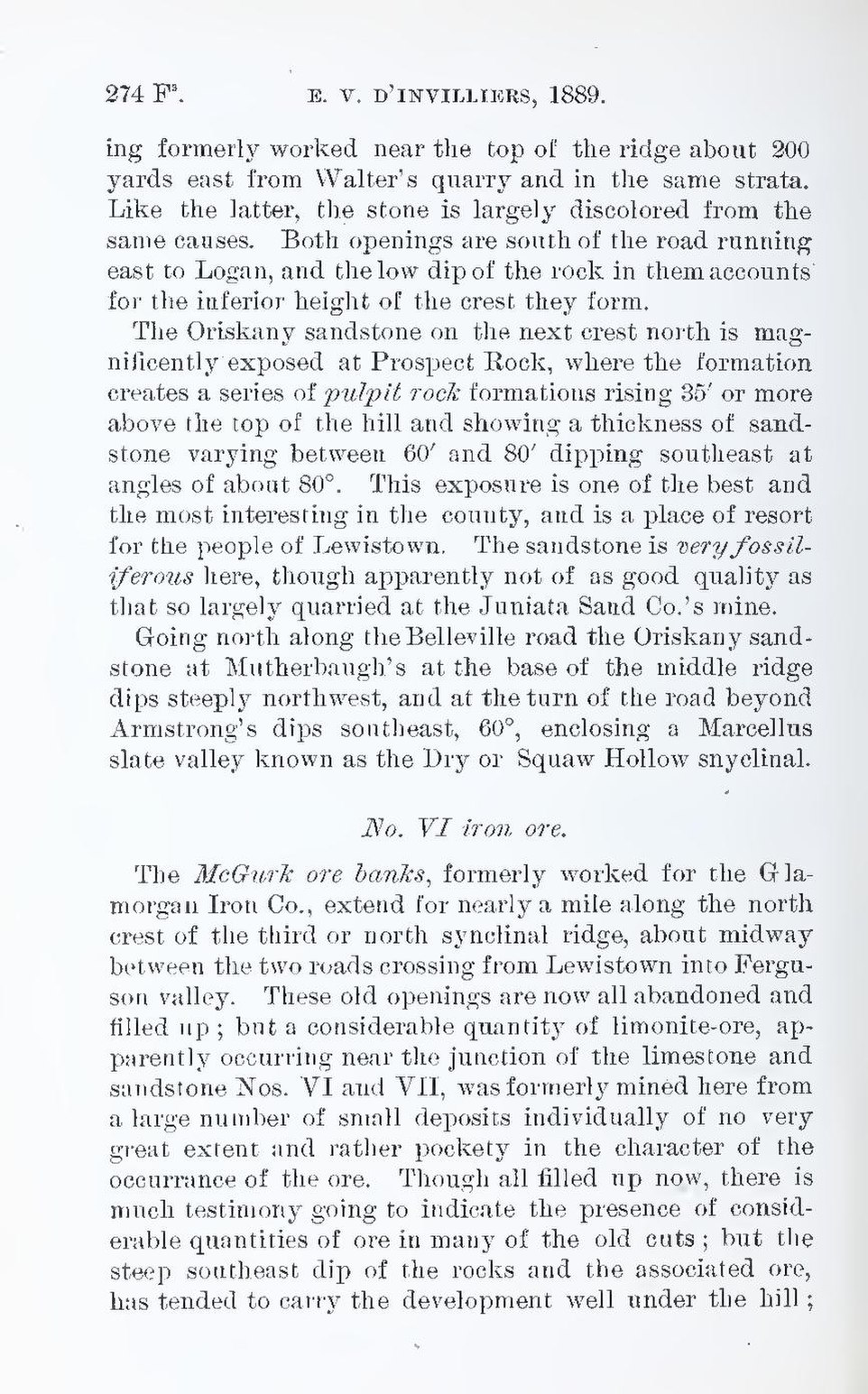ing formerly worked near the top of the ridge about 200 yards east from Walter's quarry and in the same strata. Like the latter, the stone is largely discolored from the same causes. Both openings are south of the road running east to Logan, and the low dip of the rock in them accounts for the inferior height of the crest they form.
The Oriskany sandstone on the next crest north is magnificently exposed at Prospect Rock, where the formation creates a series of pulpit rock formations rising 35′ or more above the top of the hill and showing a thickness of sandstone varying between 60′ and 80′ dipping southeast at angles of about 80°. This exposure is one of the best and the most interesting in the county, and is a place of resort for the people of Lewistown. The sandstone is very fossiliferous here, though apparently not of as good quality as that so largely quarried at the Juniata Sand Co.’s mine.
Going north along the Belleville road the Oriskany sandstone at Mutherbaugh’s at the base of the middle ridge dips steeply northwest, and at the turn of the road beyond Armstrong’s dips southeast, 60°, enclosing a Marcellus slate valley known as the Dry or Squaw Hollow snyclinal.
No. VI iron ore.
The McGurk ore banks, formerly worked for the Glamorgan Iron Co., extend for nearly a mile along the north crest of the third or north synclinal ridge, about midway between the two roads crossing from Lewistown into Ferguson valley. These old openings are now all abandoned and filled up; but a considerable quantity of limonite-ore, apparently occurring near the junction of the limestone and sandstone Nos. VI and VII, was formerly mined here from a large number of small deposits individually of no very great extent and rather pockety in the character of the occurrance of the ore. Though all filled up now, there is much testimony going to indicate the presence of considerable quantities of ore in many of the old cuts; but the steep southeast dip of the rocks and the associated ore, has tended to carry the development well under the hill;
